Interviews with Experts
7 Essential Aspects of Xeriscaping With Trees for New Gardeners
You’ve probably heard the saying, ‘A stitch in time saves nine.’ When it comes to xeriscaping with trees, this adage rings especially true.
As a new gardener, you may be eager to plant and watch your garden grow, but taking the time to understand and implement the essential aspects of xeriscaping with trees will set the stage for a thriving and sustainable landscape.
Whether you’re looking to conserve water, reduce maintenance, or create a visually appealing garden, mastering these key elements will lay the foundation for success.


Key Takeaways
- Proper soil preparation and mulching are essential for successful tree planting in xeriscaping. Removing weeds, rocks, and debris, improving soil aeration and drainage, and adding organic matter will enhance soil fertility and structure. Mulching around the tree helps retain moisture, regulates soil temperature, and acts as a natural weed barrier.
- Implementing water-efficient irrigation techniques and systems is crucial in xeriscaping. Drip irrigation, mulching, pressure regulators, leak detection, and smart irrigation controllers are effective methods to conserve water and promote healthy plant growth. Rainwater harvesting systems can also be installed to collect and store rainwater.
- Native species selection is important for xeriscaping with trees. Researching and choosing trees adapted to the local climate, soil conditions, and drought resistance will ensure their survival and minimize water requirements. Prioritizing trees that provide food and shelter for local wildlife is also beneficial.
- Considering sunlight requirements and wind resistance is vital when selecting and placing trees in a xeriscaping garden. Understanding the intensity and duration of sunlight in different areas, as well as potential wind exposure, will help make informed decisions about tree placement. Choosing trees with flexible trunks and branches and providing support in wind-prone areas will help ensure their stability.
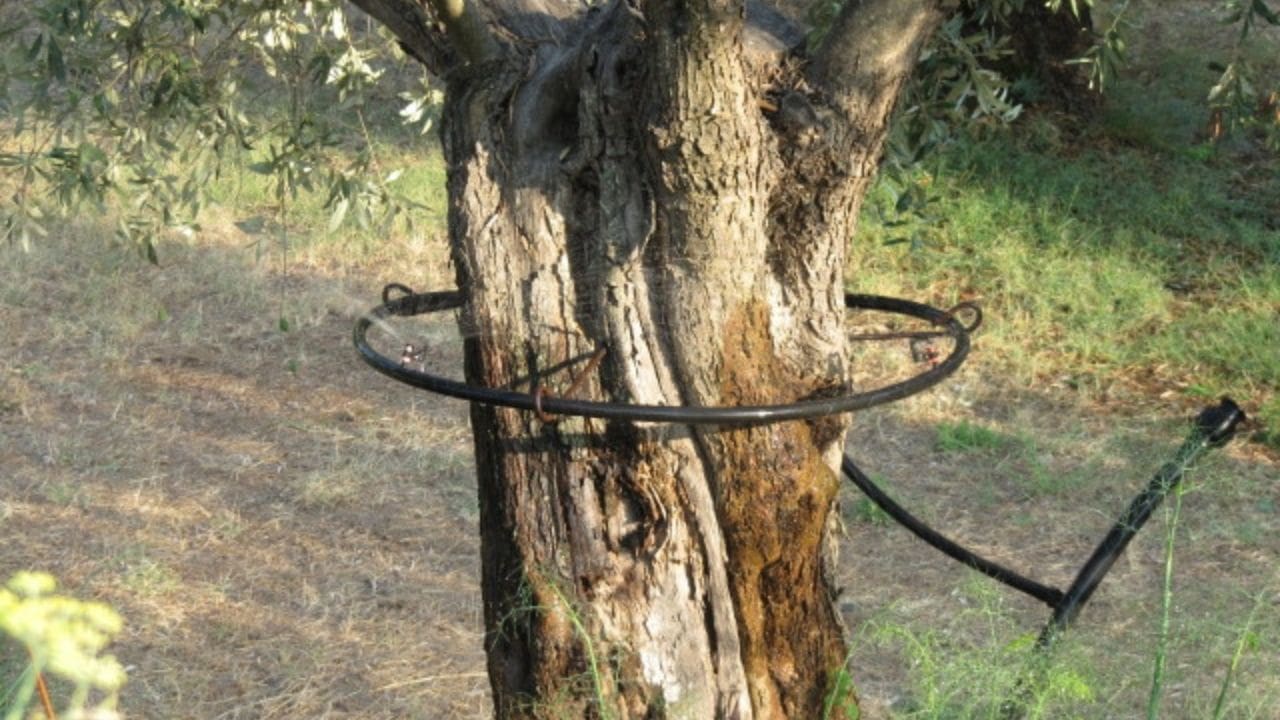

Soil Preparation
Before planting trees in your xeriscaped garden, it’s essential to prepare the soil properly to ensure optimal growth and water retention. Start by removing any weeds, rocks, or debris from the planting area. Once the area is clear, loosen the soil to a depth of at least 12 inches. This will improve the soil’s aeration and drainage, allowing the tree’s roots to penetrate easily.
Next, conduct a soil test to determine its pH level and nutrient content. This will help you choose the right amendments to improve the soil’s quality. In xeriscaping, it’s crucial to use organic matter such as compost or well-rotted manure to enhance the soil structure and fertility. Incorporate the organic matter into the soil to a depth of 6-8 inches.
To further aid in water retention, consider adding a layer of mulch around the base of the tree after planting. Mulch helps regulate soil temperature, reduce water evaporation, and suppress weed growth. However, ensure that the mulch isn’t in direct contact with the tree’s trunk to prevent rot.
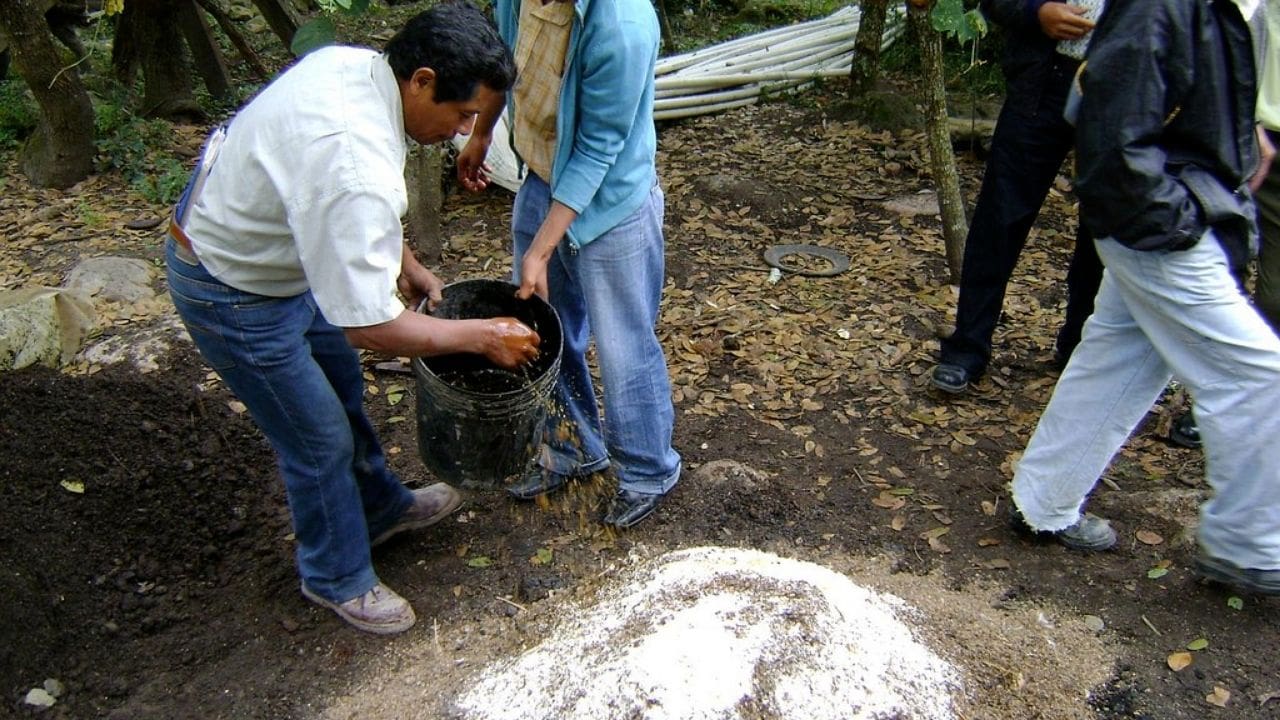

Mulching
After preparing the soil, the next step in xeriscaping with trees is to apply a layer of mulch around the base of the tree to aid in water retention and weed suppression.
Mulching is crucial for tree health and water conservation in xeriscaping. Start by clearing any grass or weeds from the area around the tree. Then, spread a 2-4 inch layer of organic mulch, such as wood chips or bark, in a donut shape around the tree, leaving a few inches of space around the trunk to prevent rot.
This mulch layer helps to retain soil moisture by reducing evaporation, especially in hot and dry climates. It also regulates soil temperature, keeping roots cooler in summer and warmer in winter. Furthermore, mulch acts as a natural weed barrier, reducing the competition for water and nutrients.
When applying mulch, ensure it isn’t piled up against the tree trunk, as this can create a moist environment where pests and diseases thrive. Regularly inspect the mulch layer to prevent it from compacting and hindering water penetration.
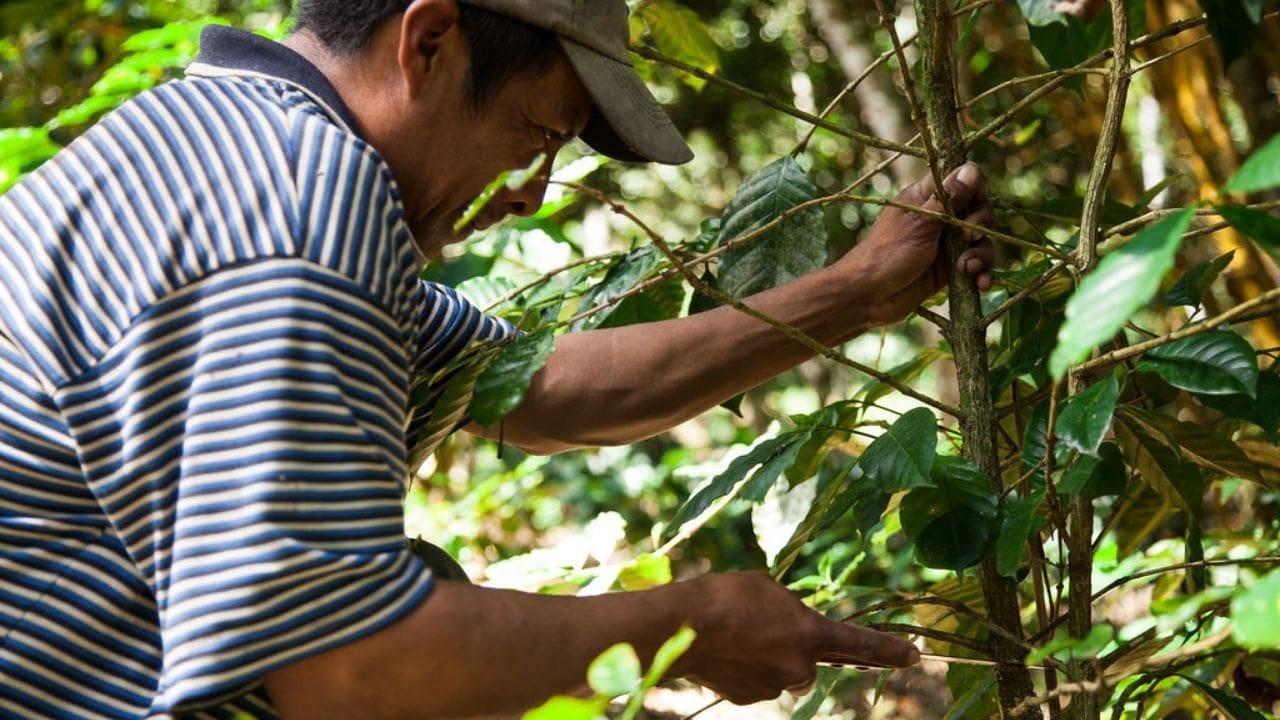

Irrigation Techniques
When it comes to xeriscaping with trees, mastering the basics of drip irrigation is crucial. By understanding water-efficient systems, you can ensure that your trees receive the moisture they need without wasting water.
Additionally, incorporating mulching as part of your irrigation techniques can help retain moisture in the soil and reduce water evaporation.
Drip Irrigation Basics
To efficiently water your xeriscaped garden, consider implementing a drip irrigation system, which delivers water directly to the roots of plants, minimizing waste and promoting healthier growth.
When setting up a drip irrigation system, follow these practical tips:
- Use Pressure Regulators: Install pressure regulators to ensure that the water is delivered at a consistent and safe pressure, preventing damage to the system and plants.
- Check for Leaks Regularly: Inspect the system frequently to identify and fix any leaks, ensuring that water is used efficiently and preventing water damage to your garden.
- Install a Filter: Utilize a filter to prevent clogging of the system, maintaining proper water flow and preventing potential damage to your plants.
- Consider a Timer: Incorporate a timer into your system to automate watering schedules, ensuring that your plants receive water consistently while preventing overwatering.
Implementing these drip irrigation basics will help you efficiently water your xeriscaped garden while promoting the safety and health of your plants.
Water-Efficient Systems
Consider optimizing your xeriscaped garden’s water usage by exploring water-efficient systems. Specifically, focus on irrigation techniques that promote healthy plant growth while minimizing water waste.
One effective technique is using micro-irrigation systems such as drip irrigation and soaker hoses. These systems deliver water directly to the root zone of plants, reducing evaporation and water runoff.
Additionally, consider installing a rainwater harvesting system to collect and store rainwater for later use in your garden. This not only conserves water but also reduces your reliance on traditional water sources.
Another water-efficient method is utilizing smart irrigation controllers that adjust watering schedules based on weather conditions and soil moisture levels.
Mulching for Moisture
Utilize a generous layer of organic mulch to conserve soil moisture and suppress weed growth in your xeriscaped garden.
Organic mulch, such as wood chips or shredded leaves, serves as a protective barrier, reducing water evaporation and maintaining soil temperature. This promotes healthy root development and reduces the need for frequent watering.
When mulching, keep these points in mind:
- Apply mulch to a depth of 2-4 inches to effectively retain moisture.
- Leave a small gap around the base of trees to prevent moisture-related diseases.
- Use mulch that allows for water penetration to the soil.
- Regularly inspect and replenish mulch to ensure consistent moisture retention.


Native Species Selection
When selecting native species for your xeriscaped garden, it’s important to consider the local tree varieties that thrive in your area. Assess the specific soil and climate conditions of your garden to determine which species will be best suited for xeriscaping.
Local Tree Varieties
To choose the best local tree varieties for your xeriscaping project, begin by researching the native species that are well adapted to your specific climate and soil conditions. Consider the following points to make an informed decision:
- Climate Suitability: Look for trees that thrive in your local climate, considering temperature fluctuations and water availability.
- Soil Compatibility: Choose tree varieties that are compatible with your soil type, whether it’s sandy, loamy, or clay-based.
- Drought Resistance: Prioritize trees with high drought tolerance to ensure their survival during dry periods.
- Wildlife Support: Select tree species that provide food and shelter for local wildlife, contributing to the overall ecosystem.
Soil and Climate
As you consider the soil and climate conditions for your xeriscaping project, it’s essential to pivot from your previous research on local tree varieties and focus on selecting native species that are well adapted to your specific environmental factors.
When evaluating soil, look for its drainage properties, pH levels, and composition. Understanding the climate in your area is crucial in determining which native tree species will thrive. Consider the average precipitation, temperature fluctuations, and the length of the growing season.
Selecting trees that are acclimated to your local soil and climate conditions won’t only ensure their survival but also promote a sustainable and low-maintenance landscape.
Consult local nurseries, extension offices, or botanic gardens for expert advice on native species that are well-suited to your specific soil and climate, ensuring the success of your xeriscaping project.
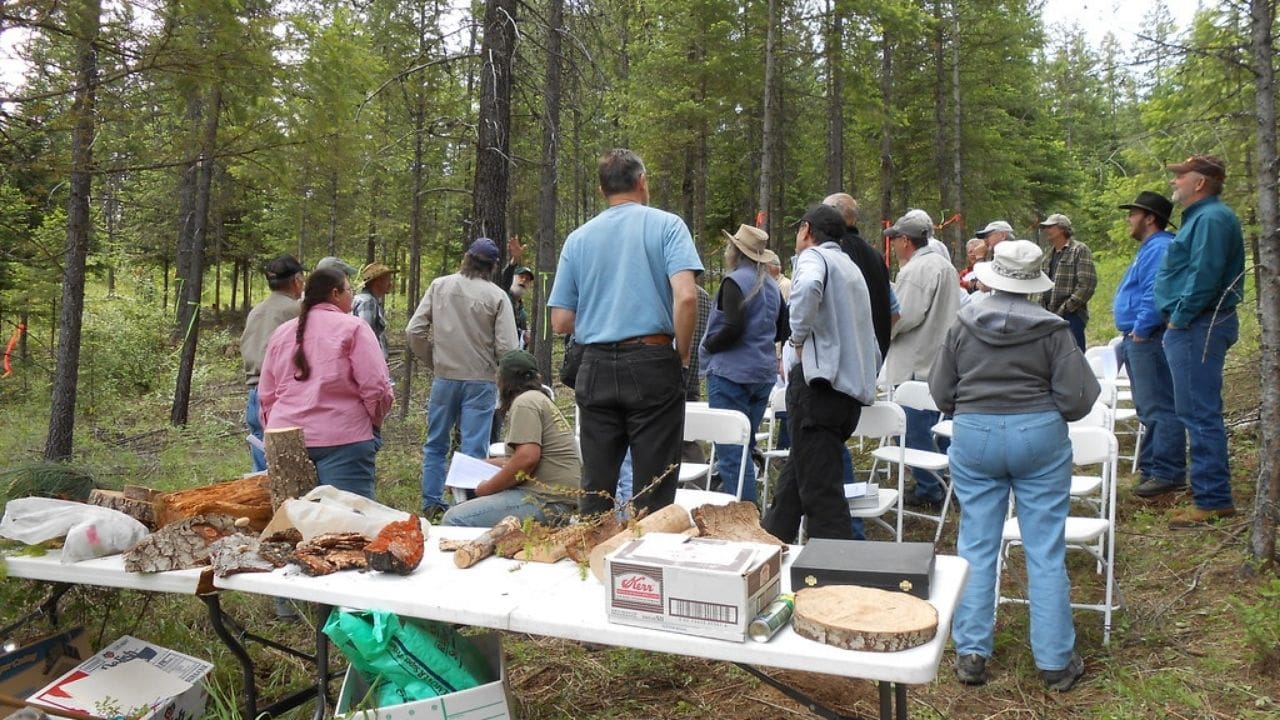

Sun Exposure
Properly assessing the sun exposure in your garden is crucial for selecting the right trees for xeriscaping. When considering sun exposure, keep in mind the following:
- Intensity: Understand the intensity of the sunlight in different areas of your garden. Some trees may thrive in full sun, while others require partial shade to prevent sunscald and heat stress.
- Duration: Take note of how long each area of your garden receives sunlight throughout the day. This information will help you match trees with their specific sunlight needs.
- Seasonal Variations: Consider how the sun exposure changes with the seasons. Trees that require full sun during the growing season may benefit from some shade during scorching summer days.
- Microclimates: Identify microclimates within your garden, such as areas near buildings or walls that may create pockets of intense heat. Understanding these microclimates will help you make informed decisions about tree placement.


Wind Resistance
Assess the potential wind exposure in your garden to identify trees with the appropriate wind resistance for successful xeriscaping. Wind can significantly impact the health and stability of trees in a xeriscape garden. When selecting trees for wind-prone areas, look for those with flexible trunks and branches that can withstand strong gusts.
Species such as the live oak (Quercus virginiana), bald cypress (Taxodium distichum), and desert willow (Chilopsis linearis) are known for their excellent wind resistance. These trees have adapted to windy conditions and are less likely to suffer from wind-related damage.
In addition to tree selection, proper planting and maintenance practices can further enhance wind resistance. Ensure that trees are planted at the appropriate depth and are adequately staked to promote strong root development and stability. Regular pruning to remove dead or weak branches can also improve a tree’s ability to withstand wind.
It’s important to note that even wind-resistant trees may require additional support, especially during their early growth stages. Consider using windbreaks or other protective structures to reduce the impact of strong winds on newly planted trees.
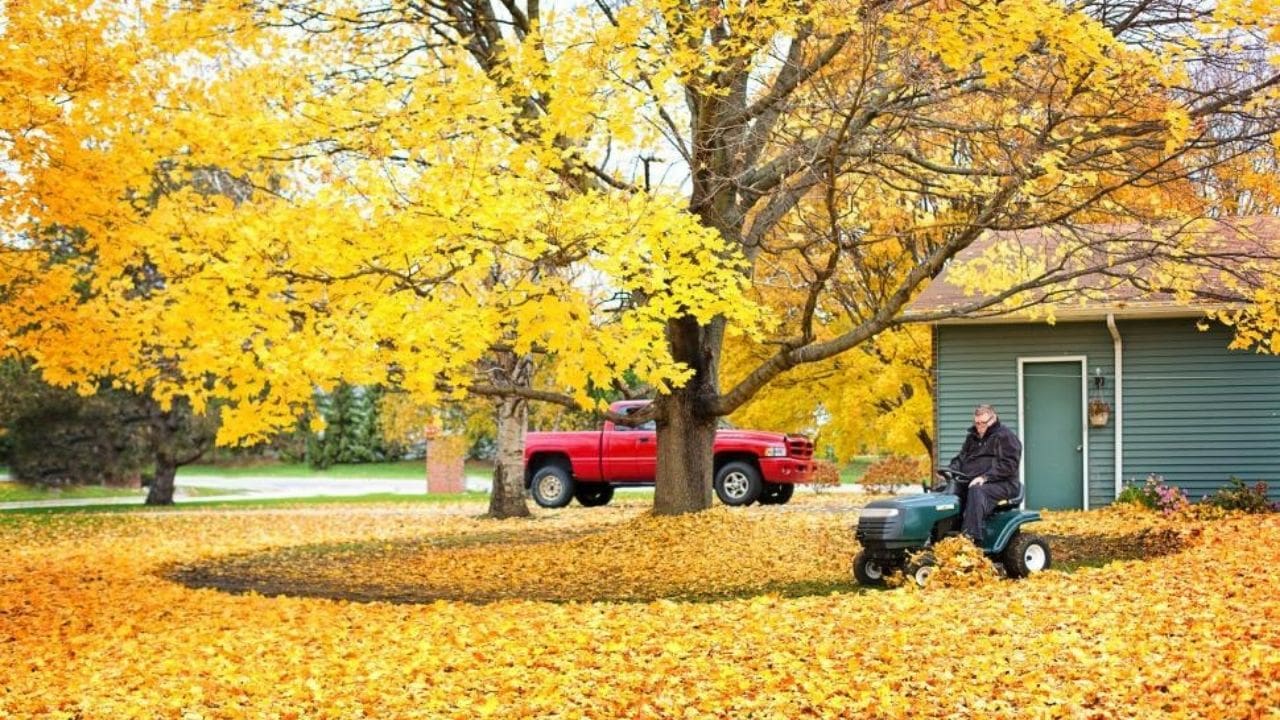

Pruning
To ensure the wind resistance and overall health of your trees in a xeriscape garden, proper pruning methods are essential for promoting strong and resilient growth. When it comes to pruning your trees, there are several key points to keep in mind:
- Safety First: Before you start pruning, always ensure your own safety by wearing appropriate protective gear such as gloves, goggles, and sturdy shoes. Use a stable ladder if needed, and be mindful of any overhead obstacles.
- Tools Matter: Use sharp, clean pruning tools to make precise cuts. Disinfect your tools before and after use to prevent the spread of diseases between plants.
- Know Your Cuts: Learn about different types of cuts such as thinning, heading, and reduction cuts to understand how each one affects the tree’s growth and shape.
- Timing Is Key: Prune during the dormant season to minimize stress on the tree. Avoid pruning during periods of active growth to prevent excessive sap loss and vulnerability to pests and diseases.


Frequently Asked Questions
How Do I Choose the Right Type of Tree for Xeriscaping in a Specific Climate or Region?
First, identify your climate zone. Research trees native to your area that are drought-tolerant. Consider factors like mature size, water requirements, and sun exposure. Consult local nurseries or extension offices for specific recommendations.
Are There Any Specific Pests or Diseases That I Should Be Aware of When Xeriscaping With Trees?
When xeriscaping with trees, be vigilant for pests and diseases. Monitor for common issues like spider mites, aphids, and root rot. Use proper irrigation and maintenance to prevent these problems. Stay informed and proactive.
What Are Some Alternative Methods for Watering Trees in a Xeriscaped Garden, Aside From Traditional Irrigation Techniques?
To water trees in a xeriscaped garden, consider using techniques like drip irrigation, soaker hoses, or water-efficient irrigation systems. These methods help conserve water and ensure trees receive the right amount of moisture.
Can I Incorporate Fruit-Bearing Trees Into a Xeriscaped Garden, and if So, How Can I Ensure They Thrive in a Low-Water Environment?
You can incorporate fruit-bearing trees into a xeriscaped garden by choosing drought-tolerant varieties like pomegranate or fig. Ensure their success by providing adequate mulch, proper soil preparation, and deep, infrequent watering.
Are There Any Special Considerations for Tree Placement and Spacing in a Xeriscaped Garden to Maximize Water Conservation and Aesthetic Appeal?
When planning tree placement in a xeriscaped garden, consider the mature size of the trees and their root systems. Allow sufficient space between trees to avoid competition for water and nutrients. Position trees to provide shade and windbreaks, maximizing water conservation and aesthetic appeal.
Top 8 Pruning Saws for Effective Garden Maintenance
tietoc Mini Cordless Chainsaw: A 2023 Upgrade for Effortless Cutting
Upgrade to the cutting-edge with the tietoc Mini Cordless Chainsaw, featuring a 6 Inch handheld chain saw with a security lock. This 2023 upgrade is designed to be senior-friendly and comes with a battery-powered super saw equipped with a strong manganese steel chain and an automatic oiler. It offers unmatched maneuverability and ease of use, making it perfect for precise and quick cutting tasks for users of any experience level.
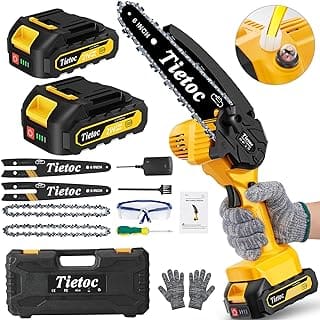

Compact and Robust Folding Pruning Saw for Garden Adventurers
Introducing the perfect companion for your outdoor expeditions – the 7-Inch Folding Hand Pruning Saw. Designed for both live and dry wood cutting, this heavy-duty garden saw features a 7-inch hardened SK5 high carbon steel blade that is built to last. The foldable nature of this saw makes it a convenient and safe addition to any camping or hiking gear. Plus, with its high-quality construction, you can confidently tackle any tree trimming task on the go.
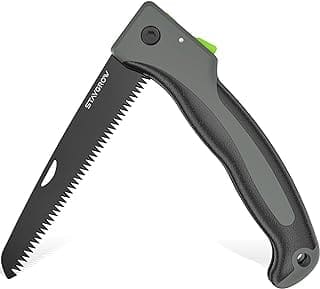

Versatile Mini Chainsaw for Wood Crafting and Pruning
Adaptability meets power with this Mini Chainsaw for Dewalt Battery 20V MAX. Boasting an auto-oiler, 8-inch and 6-inch 2-IN-1 brushless cordless design, this pruning chainsaw is tailored for precision wood cutting and extensive tree trimming. Note that this is a tool-only offering, perfect for those who already possess the compatible Dewalt battery. Lightweight and highly maneuverable, this chainsaw stands out as a valuable addition to any home gardening toolkit or professional landscaping arsenal.


Advanced Mini Chainsaw with Brushless Motor and Quick Cutting
Upgrade your pruning game with this powerful Mini Chainsaw Cordless 6 Inch saw. With a 32FTS cutting speed and a robust brushless electric motor, it slices through wood with ease, dramatically reducing the time and effort required for pruning tasks. The included 30Ah battery ensures longevity and continuous power, while the auto oiler feature keeps the chain sharp and ready for action. Lightweight and designed for ergonomics, this mini chainsaw allows for precise tree trimming without the bulk of traditional saws.
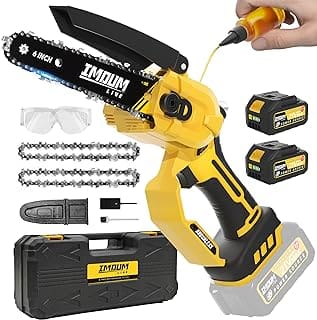

Makita XCU14Z LXT Lithium-Ion Brushless Pruning Saw for Refined Power
Experience the refined power of the Makita XCU14Z 18V LXT Lithium-Ion Brushless Cordless 6 Pruning Saw, a tool-only option that promises top performance without the clutter of cords. Its advanced brushless motor provides increased efficiency and lasting power. This compact and ergonomic pruning saw is designed for easy operation and comfort, ensuring that your pruning tasks are completed with precision and minimal effort. It’s an excellent investment for garden professionals and enthusiasts alike.
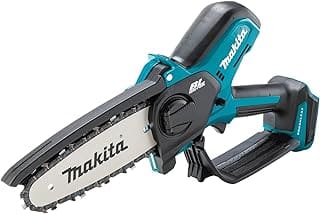

Efficient Pruning with Cordless Mini Chainsaw
The Cordless Mini Chainsaw 6-INCH is a highly efficient electric power chainsaw, offering the convenience of portability without sacrificing strength. Equipped with 2Pcs 24V 2000MAH rechargeable batteries and a protective splash guard, this saw is ideal for various cutting tasks including wood cutting, tree trimming, and gardening. Its compact size makes it especially useful during camping, allowing for quick and easy clearing and gathering of firewood or other campground maintenance.


Fiskars Power Tooth Soft Grip Folding Saw – Your Gardening Sidekick
Say hello to effortless pruning with the Fiskars 390470-1002 Power Tooth Soft Grip Folding Saw. At 10 inches, this saw boasts a durable and sharp blade that folds neatly into its handle for safe carrying and storage. The saw’s power tooth blade with triple-ground razor-sharp teeth slices through wood with ease, making it ideal for tidying up trees or cutting firewood. The soft grip enhances comfort and control, reducing strain during extended use. Get ready to experience a new standard in folding saws for your gardening adventures.


Take the Portable Survival Folding Hand Saw on Your Next Adventure
The Portable Survival Folding Hand Saw is an essential outdoor and garden tool, featuring an 11-inch steel blade and a practical build that balances heavy-duty performance with lightweight ease. The non-slip handle coupled with a hand guard ensures safety and control during use. This compact and pocket-sized pruning saw is ideal for camping and tree pruning, effortlessly fitting into your back pocket or backpack, ready for whenever you need to make quick cuts on the go.
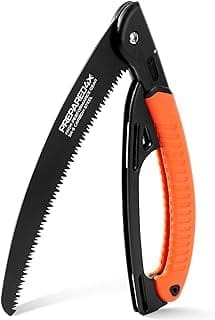



Hello there! I’m Logan Foster, the green-thumbed social media marketer behind the vibrant world of 1800TreeGuy.com. With roots firmly planted in arboriculture, I’ve branched out to help clients cultivate their dream outdoor spaces, one leafy canopy at a time. My knack for nurturing nature is more than a profession—it’s a way of life.
When I’m not talking trees and teaching the art of arboreal care, you can find me cheering on the Bulldogs—my alma mater’s pride and my forever team. My environmental studies there didn’t just teach me about ecosystems; they instilled a lifelong passion for protecting our planet.
Off the clock, I’m an adventurer at heart. Whether it’s trekking the Appalachian trails, pedaling down a mountain path, or crafting guides to share the wonders of the wild, I’m happiest with soil under my nails and the sun on my face. And let’s not forget Yoda, my pug sidekick. He may not have mastered the art of stillness, but his joyful grins are my daily dose of happiness.
I’m all about making connections—between people and the great outdoors and between my clients and their ideal landscape visions. My approach is personal; every tree has a story, and every garden reflects its caretaker.
If you want to green your scene or share in my outdoor escapades, give me a shout on Instagram or Facebook. Let’s cultivate a conversation and grow a community rooted in a love for the lush life.







